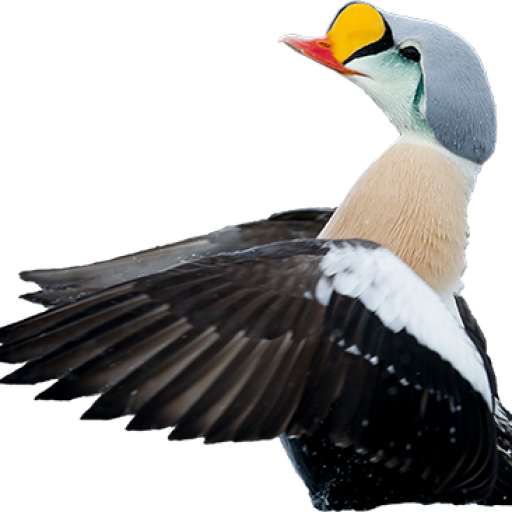 Wikipedia: Tundra swan Source: OTHER
1200px-Cygnus_bewickii_01.jpg
Classification:
Wikipedia: Tundra swan Source: OTHER
1200px-Cygnus_bewickii_01.jpg
Classification: Genus Swans (
Cygnus); Tribe Swans (
Cygnini); Subfamily Anserinae; Family Waterfowl (
Anatidae)
This bird appears across the great seas in the following continents:
Europe, North America.
General:  The tundra swan (Cygnus columbianus) is a small Holarctic swan. The two taxa within it are usually regarded as conspecific, but are also sometimes[2][3] split into two species: Bewick's swan (Cygnus bewickii) of the Palaearctic and the whistling swan (C. columbianus) proper of the Nearctic. Birds from eastern Russia (roughly east of the Taimyr Peninsula) are sometimes separated as the subspecies C. c. jankowskii, but this is not widely accepted as distinct, with most authors including them in C. c. bewickii. Tundra swans are sometimes separated in the subgenus Olor together with the other Arctic swan species.
[more]
Vocalization:
The tundra swan (Cygnus columbianus) is a small Holarctic swan. The two taxa within it are usually regarded as conspecific, but are also sometimes[2][3] split into two species: Bewick's swan (Cygnus bewickii) of the Palaearctic and the whistling swan (C. columbianus) proper of the Nearctic. Birds from eastern Russia (roughly east of the Taimyr Peninsula) are sometimes separated as the subspecies C. c. jankowskii, but this is not widely accepted as distinct, with most authors including them in C. c. bewickii. Tundra swans are sometimes separated in the subgenus Olor together with the other Arctic swan species.
[more]
Vocalization:  More vocal than other swans. Both higher pitched and deeper sounds. Birds on the water often gives crooning, crane-like notes with less defined pitch. [Link]
Calls:
More vocal than other swans. Both higher pitched and deeper sounds. Birds on the water often gives crooning, crane-like notes with less defined pitch. [Link]
Calls:  Tone is less full-bodied in these calls. Flight call a deep, yelping, soft barking sound. Each call short, with a "helpless" quality. [Link]
Physical details:
Tone is less full-bodied in these calls. Flight call a deep, yelping, soft barking sound. Each call short, with a "helpless" quality. [Link]
Physical details: length=115-127 cm,
wingspan=180-211 cm,
weight=3400-7800 g
🔍 No documented observation
